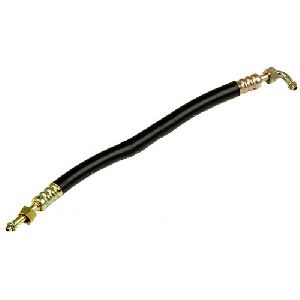
Air Curtains
Get Price Quote
Air Curtains from Cross Flow India create an invisible barrier of high velocity air to separate and manage environments, keeping conditioned air within your workspace, while keeping unconditioned air, pests and pollutants out. CFI Air Curtains can be mounted above a doorway opening, just above the header. Ambient air is drawn through the front intake grill and into the fan baskets. The blower wheel, forces the air into CFI's state-of-the-art air chambers, compressing the air and forcing if downward through the discharge nozzle. An invisible "air shield" is created that serves as the barrier preventing conditioned air from leaving the building and blocking outside air from entering, even when there is no primary door in place. Note: When there is an inward draft caused by an exhaust system in the building, also known as negative pressure, the performance of any air curtain will be heavily affected Energy conservation CFI Air Curtains work efficiently and effectively throughout the year, helping to control energy costs by keeping conditioned air in the building and blocking unwanted elements from entering. In the winter, an air curtain will recirculate the hot air that naturally rises to the ceiling, while creating a barrier that keeps out the cold air. During the summer months, the invisible air shield works to keep hot, humid air outside, while maintaining a cool, comfortable environment inside. When used for energy control, the average payback time, in saved energy costs, for an air door is less than two years. Cold storage For cooler doors, CFI Air Doors/Air Curtains offer a safe, effective and affordable solution that keeps conditioned air in place but enables workers to pass freely between regular work areas and coolers. Air curtains can save hundreds of rupees of energy costs lost through open cooler doors. Air curtains from Cross Flow India are the perfect way to provide your premises with a comfortable, clean and hygienic environment while saving energy. Not only are CFI air curtains ideal in conventional applications in offices and stores but they are also highly effective in circulatory and zoning applications in a wide range of open spaces, such as gymnasiums, bowling alleys, halls and lobbies. Air curtains may be used in restaurant applications when there is a need to create an invisible barrier to control temperature. Such as preventing loss of cool air during cooling and warm air during heating. Air curtains for restaurants have other benefits such as blocking out exhaust fumes, smoke, odours and insects.Cross Flow air curtains for doors are available in different widths: 600mm, 900 mm, 1000 mm, 1200 mm, 1500 mm, 1800 mm, 2100 mm and 2400 mm. The models vary in air volume and velocity and suit different applications. Why Use an Air Curtain? Energy savings through control of air transfer Maintain customer comfort Reduce flying insect infiltration Unhindered traffic flow Unobstructed visibility across threshold Maintain usable space around door Elimination of ice and fog in cold storage areas How Does an Air Curtain Work? Once the power is on, air is brought into the unit through the intake, enters the fan housing and is accelerated by the fan. This fast-moving air goes into a plenum, which allows for an even distribution of air along the full length of the discharge nozzle. Aerofoil-shaped vanes in the nozzle create a uniform air stream with minimal turbulence. For efficient air curtain performance, the angle of the discharge nozzle must be set correctly. An air curtain nozzle should be adjustable to aim inward or outward up to 20 degrees from the opening. The air discharged through the nozzle creates a jet stream to the floor. Approximately 80% of the air returns to the intake side of the air curtain, and 20% goes in the opposite direction. Non-recirculating air curtains can be mounted horizontally above the door or vertically on one or both sides of the door, depending on the space available and the height, width and physical characteristics of the opening. Horizontal mounting above the door minimizes the chances of damaging the air curtain. Protective measures should be taken if the air curtain is mounted vertically. The proper size, power rating and features needed for a particular air curtain application should be selected according to the following considerations: The physical dimensions of the opening, including height, width and space available for installation (clearance above the mantle). The type of door being used. The type of opening — customer entry, service entry, dock door, etc. The climate. Would supplemental heat at the door be appreciated by the building occupants? The prevailing winds and exterior temperatures on outside openings. The existence of any drafts due to pressure differences at the opening. Air Curtain Maintenance Cross Flow air curtains require minimal maintenance. Scheduled cleaning, at least once every three months, will ensure the air curtain works properly and extends the life cycle of the product. Extremely dirty, dusty or greasy environments could require a more aggressive cleaning schedule. Cleaning an Air Curtain Switch the power off at the service panel and lock the service panel to prevent power from being switched on accidentally. Remove the air intake grille for access to the blower housing and motor(s). Remove the bottom access panel on heated models for access to the blower housings and motor(s). Vacuum and scrape (if necessary) to remove the built-up dirt and debris. For instructions for your particular model, consult the appropriate installation instructions.

car ac hoses
400 Per Piece
Best Deals from Air Conditioner Parts

Air Conditioner System Tubing
Get Price Quote
Air Conditioner System Tubing, Electrical Feeder Cable

Air Conditioner Parts
Get Price Quote
Air Conditioner Parts, forged brass components, metal pipe tube connectors

AC Motors
Get Price Quote
AC Motors, DC Drives, DC Motors, dimmers, PMDC Geared Motors

Air Curtain
Get Price Quote